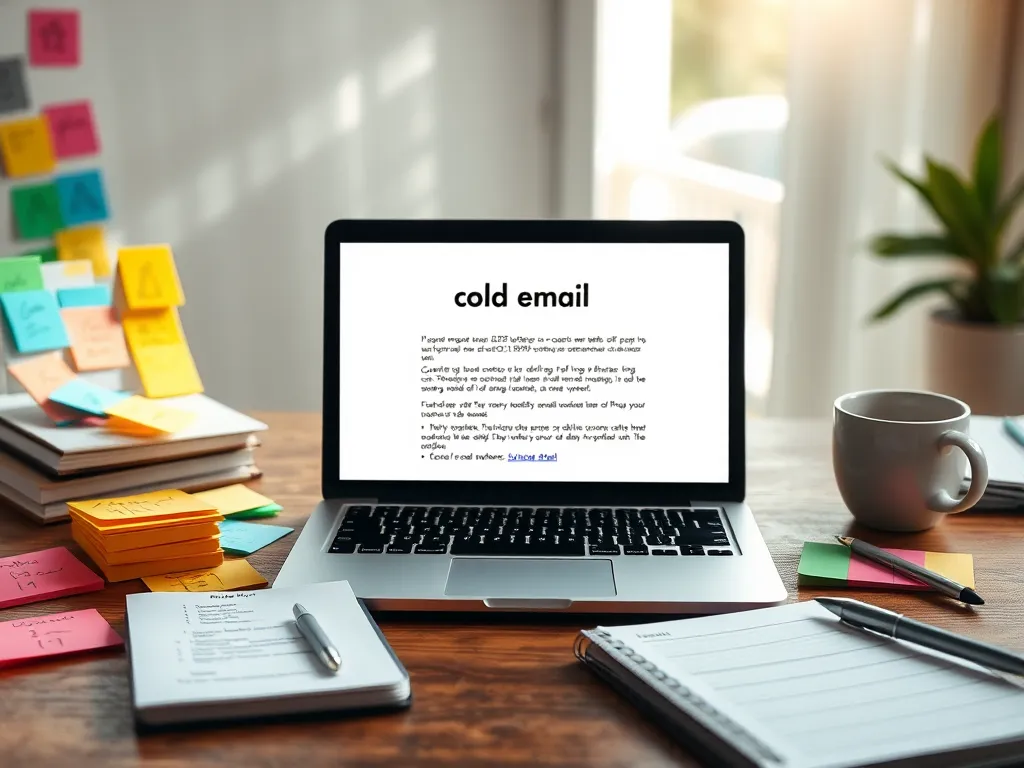10 Effective Cold Email Examples to Boost Response Rates

Cold Email Examples: Strategies, Best Practices, and Industry-Specific Templates
Cold email examples are a crucial element in the toolkit of any salesperson or marketer aiming to reach out to potential clients or customers. Unlike regular email exchanges, cold emails are sent to recipients who have no prior relationship with the sender, making them an essential strategy for initiating contact and generating leads. These emails should be well-crafted, personalized, and engaging to stand out in a crowded inbox. A successful cold email can open doors to new business opportunities and build lasting professional relationships.
Cold email examples vary significantly across different industries and objectives, emphasizing the importance of customization. For instance, a cold email sent to a tech startup will differ in tone and content compared to one sent to a nonprofit organization. Key components of effective cold email examples include a strong subject line that captures attention, a personalized introduction, and a clear call to action that invites the recipient to respond. Understanding the nuances of your audience can make a significant difference in the effectiveness of your outreach efforts.
When drafting cold email examples, it is essential to focus on the recipient's potential pain points and demonstrate how your product or service can address their needs. Providing value right from the start can pique their interest and increase the chances of engagement. In addition, incorporating social proof, such as testimonials or case studies, can lend credibility to your message and persuade the recipient to take action. The goal is to create a connection that encourages the recipient to respond favorably to your outreach.
Effective cold email examples often include a follow-up strategy, as many potential leads may not respond immediately. Timing and persistence are crucial; sending a polite follow-up email can increase your chances of receiving responses significantly. Furthermore, utilizing metrics to measure the success of your cold email campaigns can help refine your approach and enhance future outreach efforts. By analyzing open rates, click-through rates, and responses, you can continuously improve your messaging and strategy.
In summary, cold email examples are vital tools for reaching out to new clients and customers in various industries. Tailoring your approach, focusing on value, and employing effective follow-up strategies can dramatically increase your chances of success in cold emailing. By understanding the unique aspects of different sectors and continuously refining your approach based on feedback and metrics, you can optimize your cold email efforts and achieve better results.
Effective Strategies for Cold Emails
Crafting personalized cold email examples is key to capturing the recipient's attention. By addressing the recipient by name and customizing the content to align with their interests or business needs, you can establish a connection right from the start. Reference a recent achievement or mention a mutual connection if applicable; this personalization can make your email stand out amidst the vast number of generic messages.
For anyone looking to enhance their outreach strategy, exploring effective cold email examples can be incredibly beneficial.
Using compelling subject lines is paramount in cold email examples. A well-constructed subject line should be short, clear, and intriguing, prompting the recipient to open the email. Incorporating questions, numbers, or urgency can enhance your chances of getting noticed. For instance, instead of a vague subject line like "Introduction," consider something more targeted like "Helping Your Team Boost Productivity by 20%" to spark interest.
Timing your cold emails for better response rates is another effective strategy. Research suggests that sending emails during business hours, particularly mid-morning or mid-afternoon, can lead to higher open rates. Additionally, avoiding Mondays and Fridays, when people are either catching up from the weekend or winding down for the week, can enhance your outreach success.
Follow-up techniques in cold emailing are essential for maintaining engagement. If you haven't received a response after your initial email, don’t hesitate to send a friendly follow-up. This could be a simple reminder or a request for feedback. Studies show that one to three follow-up emails can significantly increase the likelihood of getting a response. Just ensure to keep your tone polite and respectful throughout the process.
Cold Email Examples for Different Industries
Real estate cold email examples should focus on showcasing properties or market insights that might interest potential buyers. A possible template could start with a friendly introduction, followed by highlighting a new listing and inviting the recipient to a virtual tour or an open house, effectively combining personalization with a direct call to action.
Software sales cold email examples can benefit from outlining specific pain points and how the software can provide solutions. Begin with a question that addresses a common challenge in the industry, followed by a brief overview of your product, and conclude with a request for a demo or a call to discuss further.
Cold email examples for startups should concentrate on conveying innovation and the unique value of their products or services. These emails can share an inspiring story about the startup’s journey, highlight any notable partnerships or achievements, and encourage recipients to learn more or join an upcoming webinar for deeper insights.
Nonprofit cold email examples should convey passion and purpose. Start with a story that demonstrates the impact of the nonprofit's work, followed by a call to action for potential donors or volunteers. Engaging storytelling can stir emotions and encourage recipients to get involved with the cause.
Common Mistakes in Cold Emails
Avoiding generic templates in cold email examples is crucial. Generic emails often fail to capture attention and can result in high unsubscribe rates. Instead, personalize each email to the recipient's specific needs or interests. Tailored content encourages engagement and fosters a connection that generic emails simply can't achieve.
Mistakes to evade in cold email subject lines include being vague or overly promotional. Subject lines that come off as spammy or insincere can lead to low open rates. Always strive for clarity and honesty; a well-crafted subject line should accurately reflect the content of the email while piquing curiosity.
Understanding the importance of research in cold emailing is vital. Sending emails without knowing anything about the recipient can yield disheartening results. Researching the recipient’s background, interests, or recent activities can provide insights that help craft a more personalized and relevant email, significantly improving engagement rates.
Overcoming objections in cold email examples requires being prepared. Anticipate potential concerns the recipient may have and address them within the email. Providing answers, reassurance, and highlighting benefits rather than features can help alleviate their hesitations and promote a positive response.
Measuring Success in Cold Email Campaigns
Metrics to track for cold email examples effectiveness include open rates, response rates, click-through rates, and unsubscribe rates. Monitoring these key performance indicators allows you to assess how well your emails are resonating with your target audience and where improvements may be needed.
A/B testing different cold email examples can provide insights into what resonates best with your audience. Experimenting with various subject lines, email content, or calls to action can highlight which elements lead to higher engagement, making it easier to refine your approach for greater success.
Tools for analyzing cold email responses are abundant and can help streamline your outreach efforts. Platforms like Mailchimp, HubSpot, and others offer analytics that can track engagement, opens, and responses. Utilizing these tools can provide valuable insights that can inform your future cold emailing strategies.
Understanding conversion rates from cold emails is crucial for evaluating success. By analyzing how many recipients took the desired action after receiving your email, you can refine your messaging and approach to improve future campaigns, ensuring that your cold emails effectively convert leads into clients.
Legal Considerations for Cold Emails
Complying with GDPR in cold email examples is essential for businesses operating in or targeting individuals within the European Union. As a sender, you must ensure that you have consent to contact individuals and provide options for them to opt-out of future communications.
Understanding CAN-SPAM Act regulations is also crucial for businesses in the United States. The regulations require that all recipients have a clear opportunity to opt-out of future emails and that the email must contain a physical address for the sender, among other requirements.
Best practices in cold email consent include being transparent about why you're reaching out and how you obtained the recipient's contact information. Providing value upfront can encourage recipients to agree to receive further communications, fostering trust and open engagement.
How to handle opt-outs in cold emailing is straightforward. You should provide a clear and easy way for recipients to unsubscribe from future emails. Promptly honoring opt-out requests is essential to maintain compliance with regulations and to respect the preferences of your audience.
